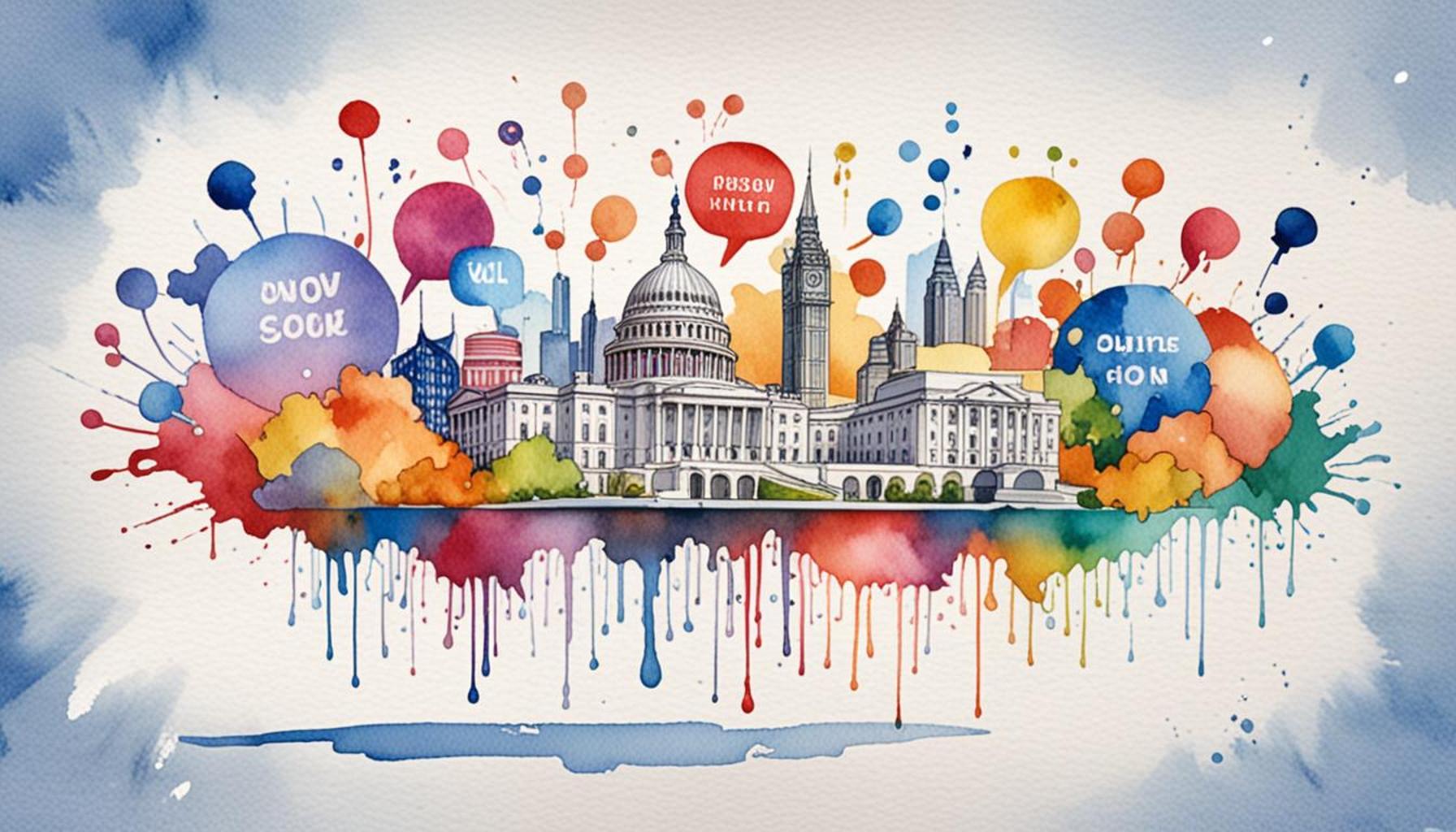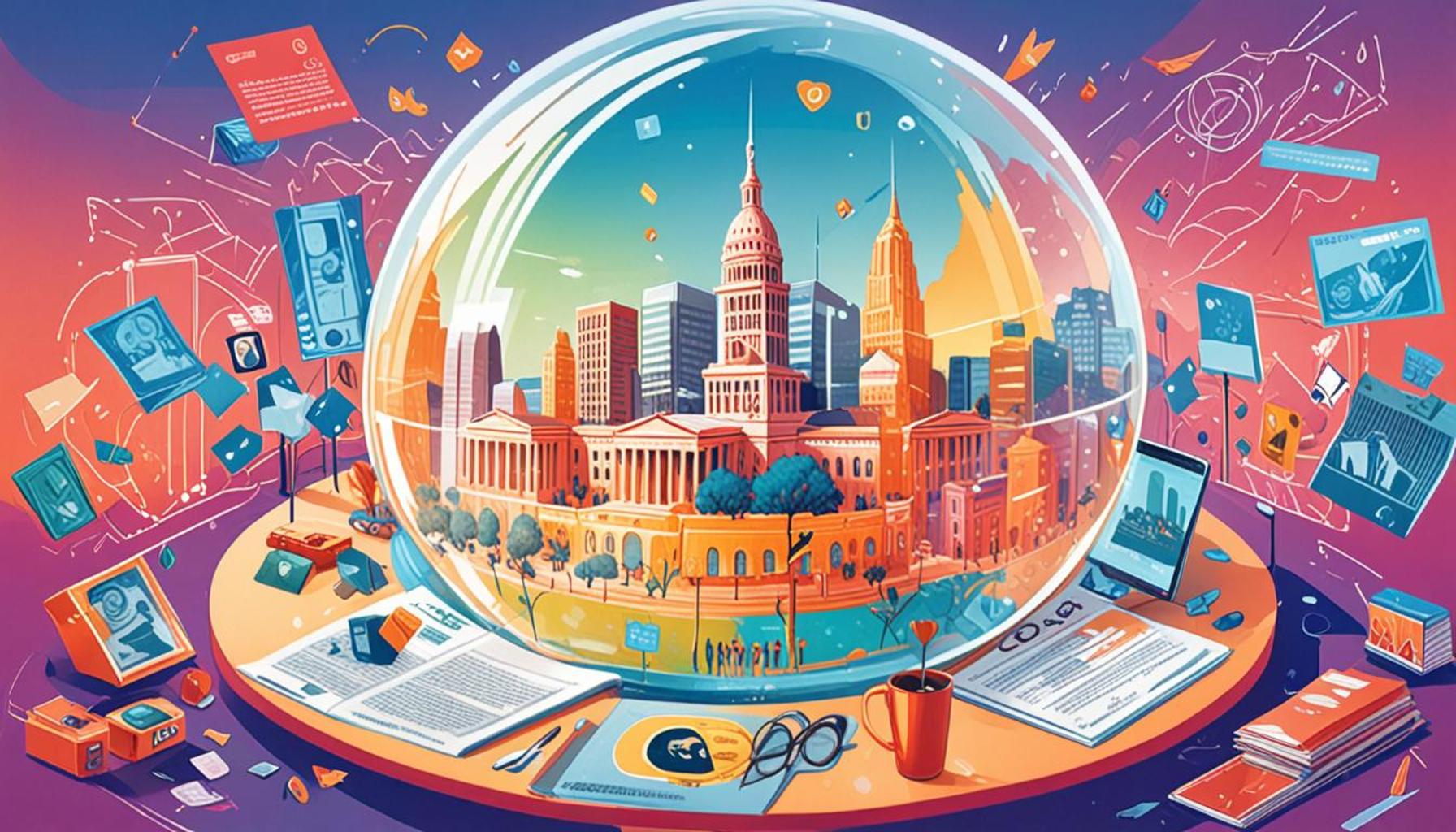How Social Media Can Enhance the Dissemination of Government Benefits Through an Efficient Content Strategy

The Evolving Landscape of Government Communication
As society transitions further into the digital world, the integration of social media into government communication strategies becomes increasingly vital. With platforms like Facebook, Twitter, and Instagram housing billions of users, governments have a robust avenue not only to reach constituents but also to engage and inform them about essential government benefits. However, leveraging social media effectively requires more than just a presence; a well-thought-out content strategy is essential to maximize outreach and engagement.
Targeted Messaging
One of the most effective ways for government entities to communicate is through targeted messaging. This approach involves customizing content to cater to the unique needs and preferences of specific demographic groups. For example, the U.S. Department of Veterans Affairs might craft different messages aimed at younger veterans versus senior citizens, addressing their distinct concerns and benefits. Such tailored communication can make information not only more relevant but also more accessible, as it speaks directly to the challenges faced by each group.
Real-Time Updates
Another significant advantage of social media is the capability for real-time updates. Consider critical scenarios like the launch of healthcare enrollment periods or disaster relief efforts. Social media platforms facilitate immediate announcements, allowing citizens to access essential information about eligibility criteria, application deadlines, and the types of assistance available. In times of urgency, such as during natural disasters, government updates via Twitter can save lives by providing timely safety alerts and relief information.
Engagement Opportunities
Moreover, social media fosters engagement opportunities that traditional communication methods may lack. Interactive posts—such as polls, Q&A sessions, and even live-streamed discussions—enable community involvement and make it easy for citizens to share their questions and experiences. For instance, a local government agency could host a Facebook Live session to explain how to navigate a recent change in welfare benefits, allowing viewers to ask questions in real time, thus enhancing transparency and building trust.
The overwhelming volume of content shared daily reinforces the necessity for strategic approaches to social media communication. Government agencies can utilize advanced analytics to gauge which posts generate the most engagement, providing insights into citizens’ interests and concerns. By understanding these metrics, governmental bodies ensure that crucial information reaches those who need it the most, driving traffic to official sources and enhancing community trust.
By tapping into the full potential of social media as a communications tool, government agencies can revolutionize their outreach efforts. The ultimate goal? To cultivate a streamlined, informative, and engaging online presence that empowers citizens to effectively navigate the plethora of benefits available to them.
CHECK OUT: Click here to explore more
Optimizing Content for Maximum Reach
To harness the full potential of social media in disseminating government benefits, agencies must emphasize an efficient content strategy that optimizes every post for maximum reach and engagement. Crafting visually appealing and informative content is crucial. Eye-catching graphics, succinct videos, and infographics can drastically enhance the overall message and drive user interaction. A recent study by the Pew Research Center found that content with strong visual elements garners up to 94% more views than text-based posts alone, underscoring the importance of incorporating visuals into government communications.
Content Variety
Moreover, government agencies should diversify their content to cater to different audience preferences. Implementing a mixture of formats can keep followers engaged and informed on critical benefits. For example:
- Infographics that break down benefits into digestible information.
- Short videos explaining application processes for programs like SNAP (Supplemental Nutrition Assistance Program).
- Interactive stories on platforms like Instagram to showcase real-life success stories from beneficiaries.
- Webinars and live Q&A sessions addressing common queries regarding government aid.
This kind of content variety not only attracts different segments of the community but also increases the likelihood of shares and reposts, amplifying outreach. According to a report by Sprout Social, posts that include interactive elements receive 50% more engagement compared to standard posts, representing a significant opportunity for government agencies to enrich their communication efforts.
Strategic Use of Hashtags
Another powerful tool in the arsenal of a successful government social media strategy is the use of hashtags. Utilizing relevant hashtags can significantly enhance visibility, especially among users searching for specific benefits. For instance, hashtags such as #GovernmentBenefits or #PublicAssistance can connect citizens with valuable resources. It is essential for agencies to research trending hashtags within their region, ensuring their content aligns with current discussions and maximizes outreach.
Additionally, using localized hashtags can position posts within community conversations. For example, if a state agency is announcing a new form of financial aid or a temporary employment program, adding state-specific hashtags or even hashtags related to local events can cultivate broader engagement. Utilizing this strategy paves the way for citizens to discover crucial benefits they may have previously overlooked.
Ultimately, an effective content strategy on social media is about innovation, understanding audience needs, and maintaining relevance in a rapidly evolving online landscape. By optimizing content, diversifying formats, and strategically employing hashtags, government agencies can significantly enhance the dissemination of benefits, ensuring that no citizen remains uninformed about the essential services available to them.
How Social Media Drives Engagement for Government Benefits
In today’s digital landscape, social media represents a powerful tool for government entities aiming to disseminate information about benefits effectively. With billions of users engaged across various platforms, the potential reach is unparalleled. Social media can create an interactive community where citizens feel empowered to seek assistance while also providing feedback on available services. An efficient content strategy leveraging social media can significantly enhance the visibility of government programs, ensuring they reach those who need them most.For example, employing targeted ads on platforms like Facebook and Instagram can specifically highlight benefits such as unemployment assistance or housing services. Additionally, sharing success stories and testimonials can foster trust among the community. Engaging content, such as infographics or short videos, can succinctly explain complex processes, making it easier for citizens to understand how to access these benefits.
Streamlined Communication Channels
Using social media allows government agencies to maintain real-time communication with the public. People can easily ask questions, get updates, and interact with officials through these channels. This immediate access helps demystify government processes, reducing frustration and misinformation. Agencies should also monitor social media for public inquiries or concerns, providing timely responses that enhance transparency.Furthermore, incorporating hashtags related to specific programs can boost discoverability. When citizens use these hashtags, they contribute to a larger conversation, increasing awareness among their networks. This grassroots outreach is crucial in breaking down barriers and reaching underrepresented communities that may not have access to traditional media outlets.
| Category | Description |
|---|---|
| Engagement | Engaging content on social media builds trust and facilitates communication regarding government services. |
| Visibility | Targeted social media campaigns can increase visibility of government benefits to more citizens. |
Harnessing the collective power of social media can lead to a more informed and engaged citizenry, which is essential for the successful dissemination of government benefits. The future of public outreach lies in effective digital strategies that resonate with the needs of the community, ensuring that the right help reaches the right people.
YOU MAY ALSO LIKE: Read read another article
Building Community Engagement and Feedback Loops
To effectively leverage social media for disseminating government benefits, it’s essential for agencies to foster community engagement and create robust feedback loops. Engaging directly with constituents not only enhances the visibility of government programs but also cultivates trust. Initiatives that encourage citizens to share their experiences can open up dialogue and provide insight into the effectiveness of various programs. For instance, agencies can initiate hashtags such as #MyBenefitsStory where beneficiaries share their personal narratives. This approach humanizes government assistance and encourages others to seek help.
Encouraging User-Generated Content
Another effective tactic is promoting user-generated content (UGC). By encouraging residents to create posts about how government benefits have impacted their lives, agencies can amplify their reach and authenticity. UGC tends to resonate more with audiences, as it showcases real-life experiences and promotes relatable scenarios. Agencies might hold contests or challenges that incentivize users to share their stories or create educational content about specific benefits, thereby sparking greater participation and conversation within the community.
Utilizing Polls and Surveys
Incorporating polls and surveys into social media campaigns can serve as both an engagement tool and a mechanism for gathering feedback. These tools allow citizens to voice their needs and preferences regarding government benefits, letting agencies tailor their offerings accordingly. For example, a poll regarding which benefits are most sought after or what obstacles residents face in accessing them could provide valuable insights that drive future content and service improvements. Research from the Social Media Examiner indicates that posts featuring polls achieve engagement rates of up to 63%, showcasing their effectiveness in invoking interactive participation.
Personalized Interaction Through Chatbots
Moreover, the integration of chatbots on social media platforms can significantly improve user experience and information dissemination. Chatbots can provide instant responses to frequently asked questions about government benefits, directing citizens to the correct pathways for assistance. This reduces the burden on human resources while maintaining a high level of accessibility. A recent survey by HubSpot revealed that 64% of consumers believe that 24/7 availability of support is the most valuable aspect of a chatbot, emphasizing the desire for immediate assistance in navigating governmental resources.
Collaborations with Community Influencers
Lastly, collaborating with local influencers and community organizations can exponentially increase the visibility of government benefits through social media. These partnerships help bridge the gap between government agencies and the communities they serve. By working with trusted voices who can amplify messages, agencies can reach untapped demographics who may be unaware of available benefits. In fact, studies show that influencer marketing delivers 11 times the return on investment (ROI) compared to traditional forms of marketing, highlighting its potential effectiveness when promoting community services and resources.
In sum, building community engagement through interactive content, user-generated narratives, and personalized responses, along with strategic partnerships with local influencers, allows government agencies to not only enhance the dissemination of benefits but also cultivate a more informed and connected citizenry. Embracing innovative practices can transform social media from a simple communication tool into a vital resource for public assistance awareness and accessibility.
RECOMMENDED: Check out this similar article
Conclusion: Empowering Citizens through Strategic Social Media Use
In today’s digital landscape, the role of social media in enhancing the dissemination of government benefits is undeniable. By implementing an efficient content strategy that prioritizes community engagement, agencies can tap into the power of two-way communication, building trust and connection with constituents. From encouraging user-generated content to utilizing data-driven tools like polls and surveys, each strategy creates opportunities for citizens to voice their needs and experiences.
The integration of innovative technologies like chatbots further enhances accessibility, providing immediate support to those seeking assistance. Additionally, collaborations with local influencers can broaden outreach efforts, connecting government services with previously underserved demographics. These combined strategies not only promote awareness of available benefits but also foster a culture of participation and advocacy, positioning residents as informed stakeholders in their communities.
Ultimately, a proactive approach to using social media for government benefit dissemination can lead to a more educated and empowered citizenry. As agencies continue to adapt and refine their methods, the potential for improving public engagement and access to essential services remains vast. By investing in these modern communication tools, government bodies can ensure that assistance reaches those who need it most, paving the way for a more inclusive and responsive system. The next step involves embracing this digital evolution—by doing so, agencies can transform not just how benefits are communicated, but how citizens perceive and interact with government services as a whole.

